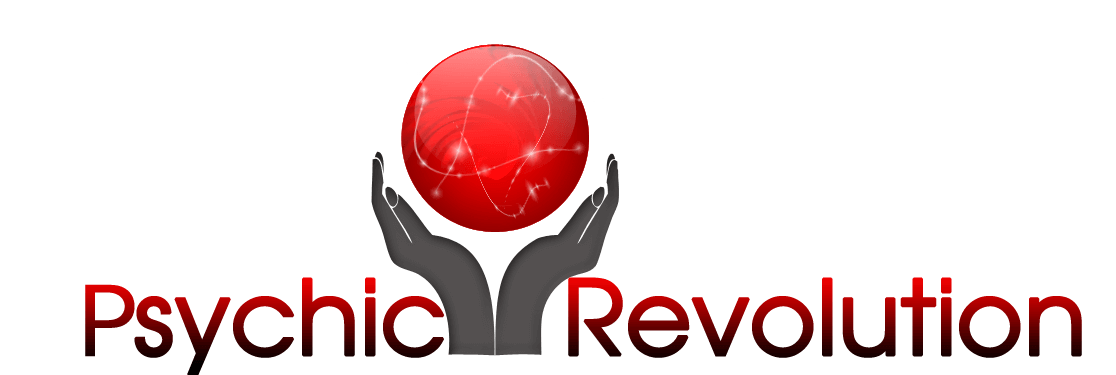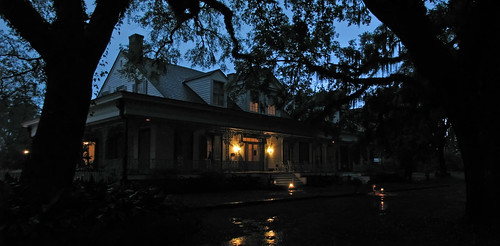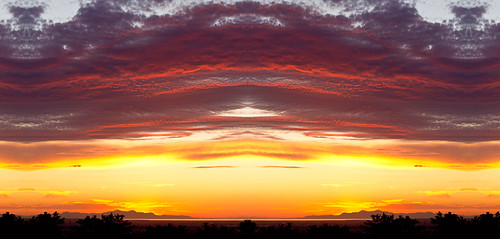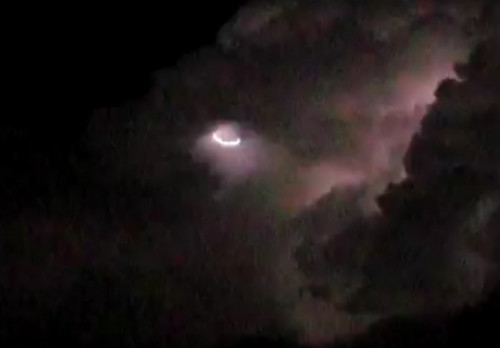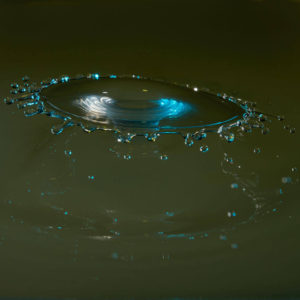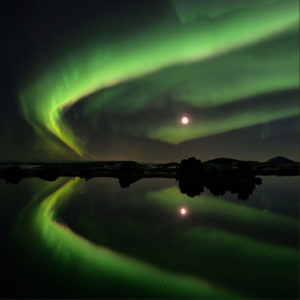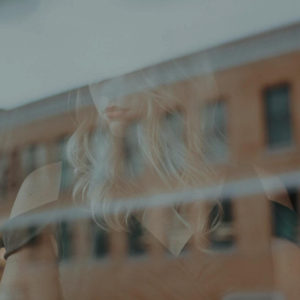Paranormal Journals
Below is a sample of the types of academic journals that contain articles pertaining to paranormal phenomena and parapsychological experiences. The list is diverse and does suggest broad academic interest in the realms beyond the physical. It may also point to how the paranormal is regarded within academia.
Advanced Development
Harrison, C. (2000). Out of the Mouths of Babes: Spiritual Awareness and the Young Gifted Child. Advanced Development, 9, 31-43
Noble, K. D. (2000). Spiritual Intelligence: A New Frame of Mind. Advanced Development, 9, 1-29
Piechowski, M. (2000). Childhood Experiences and Spiritual Giftedness. Advanced Development, 9, 65-90
American Health
Greeley, A. M. (1987). Mysticism Goes Mainstream. American Health, Jan/Feb, 47-49
American Journal of Diseases of Children
Morse, M. (1983). A Near-Death Experience in a 7 Year-Old Child. American Journal of Diseases of Children, 137(Oct)
Morse, M., Castillo, P., Venecia, D., Milstein, J., & Tyler, D. C. (1986). Childhood Near-Death Experiences. American Journal of Diseases of Children, 140(11), 1110-1114
American Journal of Psychiatry
Greyson, B., & Stevenson, I. (1980). The Phenomenology of Near-Death Experiences. American Journal of Psychiatry, 137(10), 1193-1196
American Psychologist
Kraut, R., Olson, J., Banaji, M., Bruckman, A., Cohen, J., & Couper, M. (2004). Psychological Research Online: Report of Board of Scientific Affairs’ Advisory Group on the Conduct of Research on the Internet. American Psychologist, 59(2), 105-117
Oakes, W. (1972). External Validity and the Use of Real People as Subjects. American Psychologist (Oct), 959-962
Rogers, C. (1973). Some New Challenges. American Psychologist, 28(5), 379-387
American Theosophist
Peterson, J. W. (1976). Psychic and Philosophical Perception in the World of Children. American Theosophist, 64, 313-318
British Medical Journal
Mays, N., & Pope, C. (2000). Assessing Quality in Qualitative Research. British Medical Journal, 350, 50-52
Child Abuse and Neglect
Irwin, H. (1996). Traumatic Childhood Events, Perceived Availability of Emotional Support, and the Development of Dissociative Tendencies. Child Abuse and Neglect, 20, 701-707
Communication Monographs
Sparks, G. G., & Miller, W. (2001). Investigating the Relationship Between Exposure to Television Programs that Depict Paranormal Phenomena and Beliefs in the Paranormal. Communication Monographs, 68(1), 98-113
Dissociation
Richards, D. G. (1991). A Study of the Correlations Between Subjective Psychic Experiences and Dissociative Experiences. Dissociation, 4(2), 83-91
Exceptional Human Experience
White, R. A. (1990). An Experience-Centered Approach to Parapsychology. Exceptional Human Experience, 8(1/2), 7-36
Journal for the Scientific Study of Religion
Bainbridge, W. S. (2004). After the New Age. Journal for the Scientific Study of Religion, 43, 391-394
Hay, D., & Morisy, A. (1978). Reports of Ecstatic, Paranormal, or Religious Experience in Great Britain and the United States – A Comparison of Trends. Journal for the Scientific Study of Religion, 17(3), 255-268
Rice, T. W. (2003). Believe It or Not: Religious and Other Paranormal Beliefs in the United States. Journal for the Scientific Study of Religion, 42(1), 95-106
Thomas, L. E., & Cooper, P. E. (1978). Measurement and Incidence of Mystical Experiences: An Exploratory Study. Journal for the Scientific Study of Religion, 17(4), 433-437
Creative Commons License photo credit: Symic
Journal of Broadcasting & Electronic Media
Sparks, G. G., Nelson, C. L., & Campbell, R. G. (1997). The Relationship Between Exposure to Televised Messages About Paranormal Phenomena and Paranormal Beliefs. Journal of Broadcasting & Electronic Media, 41, 345-359
Journal of Humanistic Psychology
Wuthnow, R. (1978). Peak Experiences: Some Empirical Tests. Journal of Humanistic Psychology, 18(3), 59-75
Journal of Near-Death Studies
Bonenfant, R. J. (2001). A Child’s Encounter with the Devil: an Uusual Near-death Experience with both Blissful and Frightening Elements. Journal of Near-Death Studies, 20(2), 87-100
Sutherland, C. (1989). Psychic Phenomena Following Near-Death Experiences: An Australian Study. Journal of Near-Death Studies, 8(2), 93-102
Journal of Personality
MacDonald, D. (2000). Spirituality: Description, Measurement, and Relation to the Five Factor Model of Personality. Journal of Personality, 68(1), 153-197
Journal of Personality and Social Psychology
Sears, D. O. (1986). College Sophomores in the Laboratory: Influences of a Narrow Data Base on Social Psychology’s View of Human Nature. Journal of Personality and Social Psychology, 51(3), 515-530
Tobacyk, J., & Miller, G. (1983). Belief in Paranormal Phenomena: Assessment Instrument Development and Implications for Personality Functioning. Journal of Personality and Social Psychology, 44, 1029-1037
Journal of Personality Assessment
Randall, T., & Desrosiers, M. (1980). Measurment of Supernatural Belief: Sex Differences and Locus of Control. Journal of Personality Assessment, 44(5)
Journal of Research in Personality
Lindeman, M., & Aarnio, K. (2007). Superstitious, Magical, and Paranormal Beliefs. Journal of Research in Personality, 41(4), 731-744
Journal of Scientific Exploration
Keil, J., & Stevenson, I. (1999). Do Cases of Reincarnation Type Show Similar Features Over Many Years? A Study of Turkish Cases a Generation Apart. Journal of Scientific Exploration, 13(2), 189-198
Stevenson, I. (2000). Unusual Play in Young Children Who Claim to Remember Previous Lives. Journal of Scientific Exploration, 14(4)
Stevenson, I., & Keil, J. (2000). The Stability of Assessments of Paranormal Connections in Reincarnation-Type Cases. Journal of Scientific Exploration, 14(3), 365-382
Journal of the American Society for Psychical Research
Haraldsson, E. (1981). Some Determinants of Belief in Psychical Phenomena. Journal of the American Society for Psychical Research, 75(4), 297-309
Haraldsson, E., & Houtkooper, J. M. (1991). Psychic Experiences in the Multinational Human Values Study: Who Reports Them? Journal of the American Society for Psychical Research, 85, 145-165
Irwin, H. (1985). A Study of the Measurement and Correlates of Paranormal Belief. Journal of the American Society for Psychical Research, 79(3), 301-326
Irwin, H. (1988). Parapsychology in Australia. Journal of the American Society for Psychical Research, 82, 319-338
Irwin, H. (1991). A Study of Paranormal Belief, Psychological Adjustment and Fantasy Proneness. Journal of the American Society for Psychical Research, 85(4), 317-331
Kennedy, J. E. (2000). Do People Guide Psi or Does Psi Guide People? Evidence and Implications from Life and Lab. The Journal of the American Society for Psychical Research, 94, 130-150
Kennedy, J. E., & Kanthamani, H. (1995). An Exploratory Study of the Effects of Paranormal and Spiritual Experiences on Peoples’ Lives and Well-Being. The Journal of the American Society for Psychical Research, 89 (July), 249-264
Kohr, R. L. (1980). A Survey of Psi Experiences Among Members of a Special Population. The Journal of the American Society for Psychical Research, 74(Oct), 395-411
Milton, J. (1992). Effects of ‘Paranormal’ Experiences on People’s Lives: An Unusual Survey of Spontaneous Cases. Journal of the Society for American Psychical Research, 58(828), 314-323
Journal of the Society for Psychical Research
Clarke, D. (1991). Belief in the Paranormal: A New Zealand Survey. Journal of the Society for Psychical Research, 57(823), 412-425
Haraldsson, E. (1985). Representative National Surveys of Psychic Phenomena: Iceland, Great Britain, Sweden, USA and Gallup’s Multinational Survey. Journal of the Society for Psychical Research, 53(801), 145-158
Mackenzie, A. (1969). Ostensible Mother-Child ESP. Journal of the Society for Psychical Research, 45(742), 165-167
Journal of Transpersonal Psychology
Armstrong, T. (1984). Transpersonal Experiences in Childhood. Journal of Transpersonal Psychology, 16(2), 207-230
MacDonald, D., LeClair, L., Holland, C., Alter, A., & Friedman, H. (1995). A Survey of Measures of Transpersonal Constructs. The Journal of Transpersonal Psychology, 27(2)
Piechowski, M. (2001a). Childhood Spirituality. The Journal of Transpersonal Psychology, 33(1), 1-15
Tart, C. T. (2002). Parapsychology and Transpersonal Psychology: “Anomalies” to be Explained Away or Spirit to Manifest? The Journal of Parapsychology, 66(1), 31-47
Thomas, L. E., & Cooper, P. E. (1980). Incidence and Psychological Correlates of Intense Spiritual Experiences. The Journal of Transpersonal Psychology, 12(1), 75-85
NIMHANS Journal
Usha, S., & Pasricha, S. (1989a). Claims of Paranormal Experiences – I: A Survey of Psi and Psi-Related Experiences. NIMHANS Journal, 7(2), 143-150
Usha, S., & Pasricha, S. (1989b). Claims of Paranormal Experiences – II: Attitudes Toward Psychical Research and Factors Associated with Psi and Psi-Related Experiences. NIMHANS Journal, 7(2), 151-157
Parapsychology Review
White, R. A. (1982). An Analysis of ESP Phenomena in the Saints. Parapsychology Review, Jan-Feb, 15-18
Pediatric Anesthesia
Lopez, U., Forster, A., Annoni, J. M., Habre, W., & Iselin-Chaves, I. (2006). Near-Death Experience in a Boy Undergoing Uneventful Elective Surgery under General Anesthesia. Pediatric Anesthesia, 16, 85-88.
Perceptual and Motor Skills
Allen, J., & Lester, D. (1994). Belief in Paranormal Phenomena and an External Locus of Control (Pt 1). Perceptual and Motor Skills, 79(1), 226
Goritz, A. S., & Schumacher, J. (2000). The WWW as a Research Medium: An Illustrative Survey on Paranormal Belief. Perceptual and Motor Skills, 90(3 pt 2), 1195-1206
Hunt, H. T., Gervais, A., Shearing-Johns, S., & Travis, F. (1992). Transpersonal Experiences in Childhood: An Exploratory Empirical Study of Selected Adult Groups. Perceptual and Motor Skills, 75, 1135-1153
Lester, D., & Monaghan, K. (1995). Belief in Paranormal Phenomena and Personality. Perceptual and Motor Skills, 81(1), 114
Creative Commons License photo credit: Mr Lujan!
Personality and Individual Differences
Genovese, J. E. C. (2005). Paranormal Beliefs, Schizotypy, and thinking Styles among Teachers and Future Teachers. Personality and Individual Differences, 39(1)
Lawrence, T., Edwards, C., Barraclough, N., Church, S., & Hetherington, F. (1995). Modelling Childhood Causes of Paranormal Belief and Experience: Childhood Trauma and Childhood Fantasy. Personality & Individual Differences, 19(2), 209-215
Wilson, K., & French, C. C. (2006). The Relationship between Susceptibility to False Memories, Dissociativity, and Paranormal Belief and Experience. Personality and Individual Differences, 41(8), 1493-1502
Psychoanalytic Review
Ehrenwal, J. (1971). Mother Child Symbiosis: Cradle of ESP. Psychoanalytic Review, 58(3), 455-466
Psychological Medicine
Linney, Y. M., Murray, R. M., Peters, E. R., MacDonald, A. M., Rijsdijk, F., & Sham, P. C. (2003). A Quantitative Genetic Analysis of Schizotypal Personality Traits. Psychological Medicine, 33(5), 803-816
Psychological Reports
Dudley, R. T. (2002). Order Effects in Research on Paranormal Belief. Psychological Reports, 90, 665-666
Irwin, H. (1994). Childhood Trauma and the origins of Paranormal Belief: A Constructive Replication. Psychological Reports, 74, 107-111
Tobacyk, J., Miller, M. J., & Jones, G. (1984). Paranormal Beliefs of High School Students. Psychological Reports, 55, 255-261
Public Opinion Quarterly
Kiesler, S., & Sproull, L. S. (1986). Response Effects in the Electronic Survey. Public Opinion Quarterly, 50(3), 402-413
Resuscitation
Parnia, S., & Fenwick, P. (2002). Near Death Experiences in Cardiac Arrest: Visions of a Dying Brain or Visions of a New Science of Consciousness. Resuscitation, 52, 5-11
Roeper Review
Fasko, D. (2001). An Analysis of Multiple Intelligences Theory and Its use with the Gifted and Talented. Roeper Review, 23(3)
Lovecky, D. V. (1998). Spiritual Sensitivity in Gifted Children. Roeper Review, 20(3), 178-183126-130
Sociological Focus
Emmons, C., & Sobal, J. (1981). Paranormal Beliefs: Testing the Marginality Hypothesis. Sociological Focus, 14(1), 49-56
Teaching of Psychology
Banzinger, G. (1983). Normalizing the Paranormal: Short-term and Long-term Change in Belief in the Paranormal among Older Learners During a Short Course. Teaching of Psychology, 10(4), 212-214
The Journal of Nervous and Mental Disease
Stevenson, I. (1977). Research into the Evidence of Man’s Survival After Death: A Historical and Critical Survey with a Summary of Recent Developments. The Journal of Nervous and Mental Disease, 165(3), 152-170
Stevenson, I. (1983). American Children Who Claim to Remember Previous Lives. The Journal of Nervous and Mental Disease, 171(12), 742-748
The Journal of Parapsychology
Dossey, L. (1998). Body Mind Spirit: Exploring the Parapsychology of Spirituality. The Journal of Parapsychology, 62(2), 153-158
Drewes, A. A. (2002). Dr Louisa Rhine’s Letters Revisited: The Children. The Journal of Parapsychology, 66(4), 343-370
Haight, J. (1979). Spontaneous Psi Cases: A Survey and Preliminary Study of ESP, Attitude, and Personality Relationships. The Journal of Parapsychology, 43(3), 179-203
Kennedy, J. E., Kanthamani, H., & Palmer, J. (1994). Psychic and Spiritual Experiences, Health, Well- Being, and Meaning in Life. The Journal of Parapsychology, 58, 353-383
Smith, M. D., Foster, C. L., & Stovin, G. (1998). Intelligence and Paranormal Belief: Examining the Role of Content. The Journal of Parapsychology, 62(1), 65-77
Thalbourne, M. A., & Delin, P. S. (1994). A Common Thread Underlying Belief in the Paranormal, Creative Personality, Mystical Experience and Psychopathology. The Journal of Parapsychology, 58(March), 3-38
Creative Commons License photo credit: DragonRal
The Journal of Psychology
Grimmer, M., & White, K. (1990). The Structure of Paranormal Beliefs Among Australian Psychology Students. The Journal of Psychology, 124(4), 357-370
Grimmer, M., & White, K. (1992). Nonconventional Beliefs Among Australian Science and Nonscience Students. The Journal of Psychology, 126(5), 521-528
The Journal of the American Society for Psychical Research
Beloff, J. (1994). Lessons of History. The Journal of the American Society for Psychical Research, 88, 7-22
McClenon, J. (1991). Social Science and Anomalous Experience: Paradigms for Investigating Sporadic Social Phenomena. The Journal of the American Society for Psychical Research, 85, 25-41
McClenon, J. (1994a). Surveys of Anomalous Experience: A Cross-Cultural Analysis. The Journal of the American Society for Psychical Research, 88(April), 117-135
Palmer, J. (1979). A Community Mail Survey of Psychic Experiences. The Journal of the American Society for Psychical Research, 73(3), 221-251
The Lancet
van Lommel, P., van Wees, R., Meyers, V., & Elfferich, I. (2001). Near-Death Experience in Survivors of Cardiac Arrest: a Prospective Study in the Netherlands. The Lancet, 358, 2039-2045
Theory & Psychology
Lamont, P. (2007). Paranormal Belief and the Avowal of Prior Scepticism. Theory & Psychology, 17(5), 681-696
Wisconsin Sociologist
Sheils, D., & Berg, P. (1977). A Research Note on Sociological Variables Related to Belief in Psychic Phenomena. Wisconsin Sociologist, 14, 24-31
